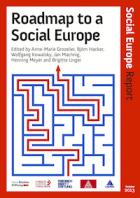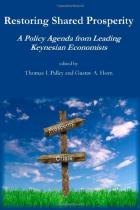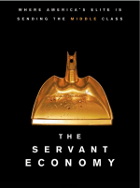Institutes |
Last not concluded articleMarch 28 The American policy of the new presidency of Donald Trump has changed profoundly in domestic politics. The main objective was to free the United States from the constraints of international trade policy. This aspect was destined to radically change the intentional policy. The United States with an international policy typical of a great power has dominated trade policy and investment over the years using the autonomous power of the dollar that could fluctuate according to national interests. The main aspect of Trump's foreign policy has been to overturn the traditional American policy, typical of a supranational economic power. The main objective has been to free the United States from the constraints of trade policy, by introducing different levels of duties (tariffs) on import, mainly from China, as well as from neighboring countries (particularly, Mexico and Candala) and Western Europe. The terms have varied over time, and the countries involved, but the goal has remained unchanged. To make the economic growth policy of the United States independent, strengthening domestic politics. The main objective was to free the United States from the constraints of international trade policy. This aspect was destined to radically change the intentional policy. The terms have varied over time and the countries involved, but the goal has remained unchanged: To make the economic growth policy of the United States independent, strengtheningdomestic growth. (Moreover, a growth that relied on the exclusion of the greatest possible number of immigrants, among whom Mexicans prevail). In essence, a policy that excludes the typical role of a great economic power at the international level to adopt the role of a relatively autarchic national economy. The goal is to increase the growth of internal production. The recent case of car manufacturing is exemplary. Imports of cars or parts are subject to duties of 25 percent with the aim of stimulating domestic growth and penalizing imports. A difficult task to achieve, considering that the large car manufacturers were partly manufacture abroad, partl. with import components assembled in the United States In essence, a policy based on domestic production in stark alternative to the tradition of a country aiming to control global trade and investment policy. In essence, a policy on the one hand aimed at converting foreign investments in favor of domestic investments; in part a policy aimed at facilitating foreign investments directed at domestic production in the various sectors of the economy. A policy that overturns the tradition of a country whose large companies are established in Asian countries such as China and in Europe, partly to occupy commercial spaces abroad, partly to import goods produced with lower costs or in any case with a favorable exchange rate. As is evident, a domestic internal policy, with a strong projection in the commercial and productive policy at an international level. A policy that is surprising in many ways, implemented by a global economic power capable of regulating the currency trend and controlling the dollar exchange rate policy as a factor capable of influencing international trade in favor of the United States, favored by the international power of the dollar, regardless of the volume of debt in the American currency. A policy of substantial transformation of international policy - starting from trade relations aimed at (or functional) to idomesticl growth, to the strengthening of national industry, to the support of employment provided by the possibility of containing wages or reducing them. In essence, a commercial policy capable of influencing the internal production policy aimed at containing wages and possibly increasing employment both by imposing the expulsion of a part of migrants, and by reducing the import of goods produced abroad with the increase of taxes. What the outcome may be remains uncertain, but it is certain that it is the reversal of the traditional policy of a major global economic power that leaves trade free, favoring the export of products characterized by advanced technology in the hands of large American companies present in various countries. In essence, the closure of international trade freedom has a negative impact not only on American imports from abroad, but also on the commercial import of goods produced in America to be paid for in dollars by Asian and European countries in particular, which have difficulty balancing their trade budgets in the face of export difficulties to the United States. a reversal of international trade and economic policy to favor (at least, in the intentions) American production policy is beyond doubt. But the outcome is also still in doubt. In the case of the major exporting power, which is the only one, a large country like the United States is at least partially missing. ::::::::::: Antonio Lettieri
Editor of Insight and President of CISS - Center for International Social Studies (Roma). He was National Secretary of CGIL; Member of ILO Governing Body and Advisor for European policy of Labour Minister. (a.lettieri@insightweb.it) |








